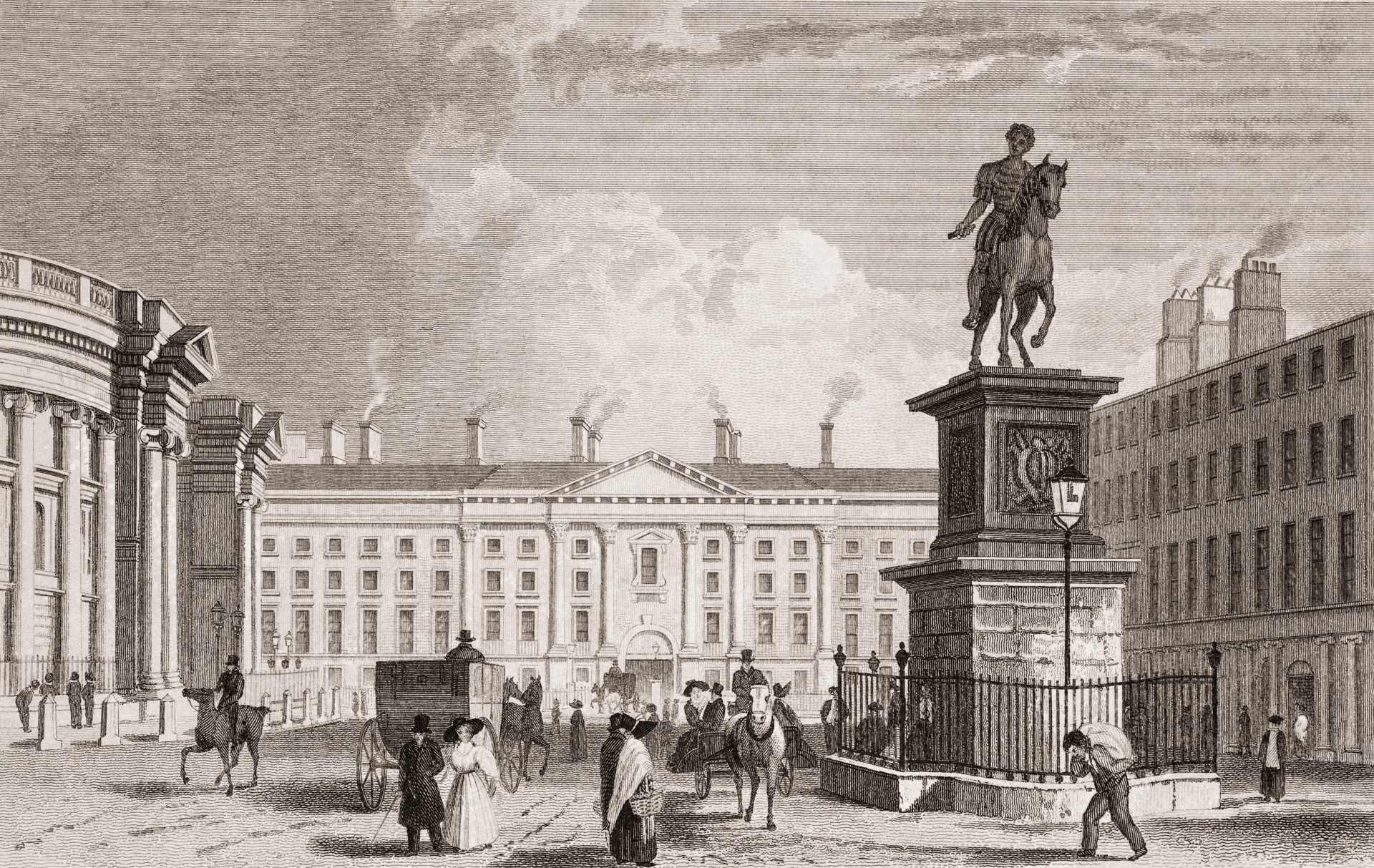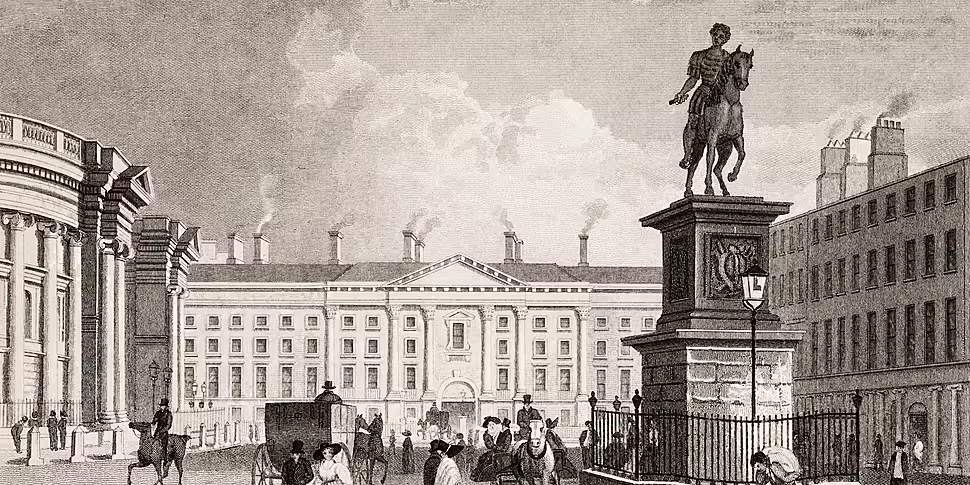Dublin was once one of the most “magnificent cities in Europe” according to one environmental journalist.
The Palace Bar on Fleet Street, Temple Bar, turns 200 years old this year, and to celebrate, The Hard Shoulder talked all things history at the pub this evening.
Environmental journalist Frank McDonald said, at the time the bar was established, Dublin was an impressive European city.
“Dublin would have been one of the most magnificent cities in Europe at the time,” he said.
“People who came over her from London were stunned by how beautiful the city was with these great streets and squares and fantastic public buildings.”
 19th Century view of Trinity College (TCD) from College Green with a sculpture of King William III, With the classically designed Bank of Ireland. Image: De Luan / Alamy Stock Photo
19th Century view of Trinity College (TCD) from College Green with a sculpture of King William III, With the classically designed Bank of Ireland. Image: De Luan / Alamy Stock PhotoWhile the Act of Union in 1800 might have taken away Dublin’s parliament, its “grandeur” was much harder to steal, according to Mr McDonald.
“Dublin took its template from Paris rather than London,” he said.
“When the Great Fire of London happened in 1666, the city was destroyed.
“The property people at the time said we have to rebuild it all on the medieval plots... that’s why London is so chaotic while Dublin had real grandeur.”
'A city in paralysis'
Three Castles Burning Host Donal Fallon pointed out that there was still a shift in the 1800s that dimmed Dublin’s shine.
“In the 19th century, Dublin is a city in paralysis,” he said.
“There's not really a whole lot of 19th century architecture worth talking about – the George Street Arcade and the pub interiors is all we have to talk about.”
He said the 19th century saw the arrival of rural Irish people into the city – and the formation of tenement houses.
“I work in 14 Henrietta Street, and at one point 100 people lived behind those doors.”
Mr McDonald argued, however, the 19th century saw Dublin develop as a city like no other at the time.
“The great development that took place in the 19th century was the railways,” he said.
“They changed the face of Dublin.
 Dublin and Kingstown Railway. Image: Creative Commons Licence
Dublin and Kingstown Railway. Image: Creative Commons Licence“We built what is now Pearse Station on Westland Row to Kingstown in 1834 – it was the first commuter railway line in the world.
“A whole other city developed along that route, particular in places like Blackrock and Don Laoghaire.
“It was the birth of the suburb.”
You can listen back here:









